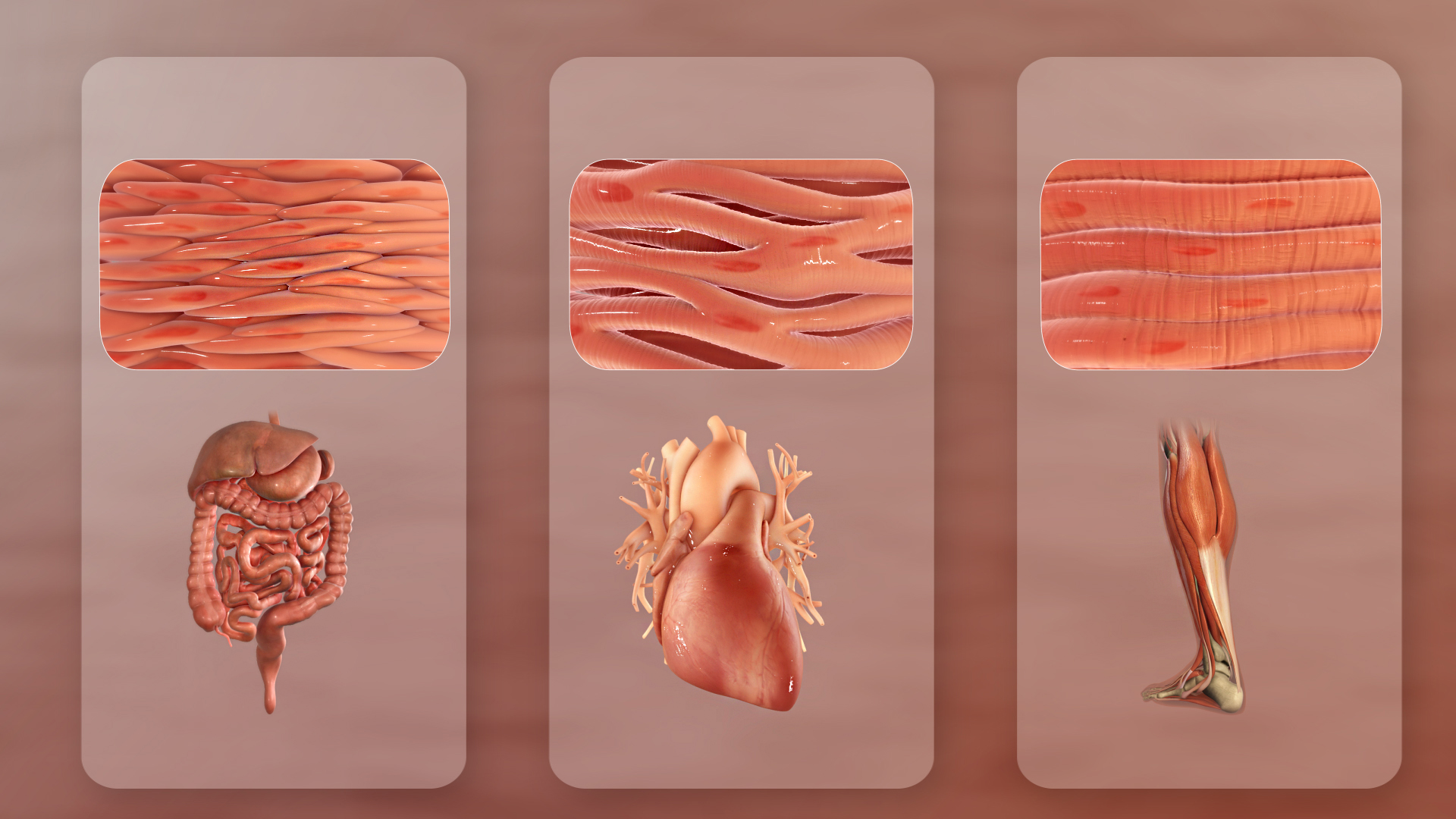Note that your final mark will not be saved in the system.
1.1.7–1.1.11 The muscular system Typeit
Type the correct answers into the spaces. Fill all the spaces before clicking ‘Check Answers!’

When someone talks about muscles, the most common type of muscle that immediately comes to mind is the skeletal muscles attached to the skeletal system which cause movement. These are classified as muscles (i.e. under an individual's conscious control), and common examples include the biceps, quadriceps and pectoralis major. However, there are, in fact, three distinct types of muscle in the human body.
The other two types can be classified as muscles (i.e. not under conscious control). A common example of these is the muscle that lines the blood vessels. This is automatically controlled by the nervous system, which regulates the size of the blood vessels' diameter depending on whether the body is at rest or under stress. For example, during exercise, the sympathetic nervous system is activated, sending a message to relax the muscle lining the walls of arteries supplying the working muscles, the lumen and allowing a larger volume of blood flow to where it is needed (known as vasodilation). A message is also sent to contract the muscle lining the walls of arteries supplying less-active internal organs, e.g. the stomach, the lumen (known as vasoconstriction). Therefore, this works to help blood flow to where it is most needed, i.e. the skeletal muscles.
Another muscle type, which is not under conscious control, is that found in the heart wall; this is known as muscle. This assists atrial and ventricular contraction, which regulates heart rate, stroke volume and cardiac output. For example, electrochemical signals send a message to increase or decrease and the strength of contraction during exercise.